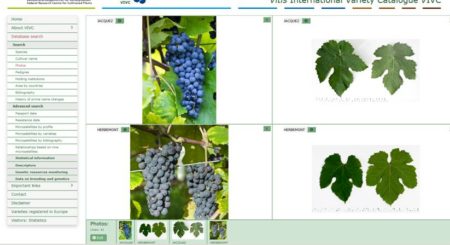- What does the ‘closed herd’ really mean for Australian breeding companies and their customers? Australia has enough pig diversity to be going on with.
- Crossbreeding East African Highland Bananas: Lessons Learnt Relevant to the Botany of the Crop After 21 Years of Genetic Enhancement. Not completely sterile, but hardly very fertile either. Hard row to hoe.
- Are we eating the world’s megafauna to extinction? Yes.
- A systematic map of evidence on the contribution of forests to poverty alleviation. Always like a map.
- Turismo Rural y Conservación Ambiental: La Participación de la Mujer Campesina en la Reserva de la Biosfera los Tuxtlas, Veracruz, Mexico. It would be a good idea.
- Not even wrong: The spurious measurement of biodiversity’s effects on ecosystem functioning. Biodiversity likely not as important for ecosystem productivity as previously thought, because maths.
- Evolution of SSR diversity from wild types to U.S. advanced cultivars in the Andean and Mesoamerican domestications of common bean (Phaseolus vulgaris). Some base-broadening may be called for.
- Comparison of Methods to Distinguish Diploid and Tetraploid Potato in Applied Diploid Breeding. Count chloroplasts.
- Phenotyping Whole Forests Will Help to Track Genetic Performance. You heard.
- Signatures of positive selection in African Butana and Kenana dairy zebu cattle. Adapted to marginal environments, but with potential for higher milk production.
- How cultivating wild plants in botanic gardens can change their genetic and phenotypic status and what it means for their conservation value. In the end, it’s a numbers game.
- Genetic Resources of Capsicum. Could use more wild relatives, more.
- Vanilla bahiana, a contribution from the Atlantic Forest biodiversity for the production of vanilla: A proteomic approach through high-definition nanoLC/MS. But does it taste the same?
- Spontaneous hybridisation within Aegilops collection and biobanking of crop wild relatives (CWR). I guess that’s bad. But could it be useful?
A survey on genebank learning materials
A request from Gayle Volk (USDA-ARS) and Pat Byrne (Colorado State University). Please respond by 15 March.
The plant genetic resources conserved by genebanks around the world are the essential raw materials for increasing crop genetic diversity and improving the global supply of food and other agricultural products. Colorado State University and USDA-ARS have developed a short survey (5-10 minutes) to assess the needs for various types of learning materials to educate the next generation of plant genebank managers, as well as to inform students about the value and use of plant genetic resources in breeding and research programs. The survey link can be found here.
Featured: Herbemont
It seems I may have inadvertently walked into a little bit of a controversy with that post on Herbemont. Dr Jerry Rodrigues of the University of Cape Town hopes for a resolution in a comment on the post:
Let’s hope that sooner rather than later, researchers in the Department of Viticulture and Enology or at the National Clonal Germplasm Repository (University of California, Davis) or the Plant Genetic Resources Unit (PGRU) at Geneva, New York will not be afraid to make public the microsatellite DNA markers for the true Herbemont.
Whereas Erika Maul from the Julius Kühn-Institut, which maintains the Vitis International Variety Catalogue (VIVC), has this to say in an email:
Herbemont and Jacquez are maintained in European collections and seem not to be endangered. These photos from VIVC could assist to confirm identification.
What is the State of the World’s Biodiversity for Food and Agriculture?
Spoiler alert: It’s not good.
Crowdsourcing variety evaluation data
Jacob van Etten has a new paper out which uses information on variety performance crowdsourced from farmers to support climate change adaptation. He’s been tweeting about it. A lot. Here’s a taste:
Yesterday I promised to write some tweets about our recent article in @PNASNews. A nerdy thread on technical details first! We used a cool model to analyze farmers' crop variety evaluation and test if seasonal climate could explain differences. https://t.co/4DD7eSVq1l pic.twitter.com/xF9MSCiJ4I
— @jacobvanetten@mastodon.online (Jacob van Etten) (@Jacobvanetten) February 20, 2019
The threads are unrolled here, here and here if you prefer to stay away from Twitter.
We’re hoping Jacob will answer any questions you might have on the paper right here on the blog in the near future. If you do have any questions, tweet them at him, or leave them here.
And let me take this opportunity of linking to this “field guide” to methods for making new crop diversity available to farmers which sort of sets Jacob’s paper in context.
